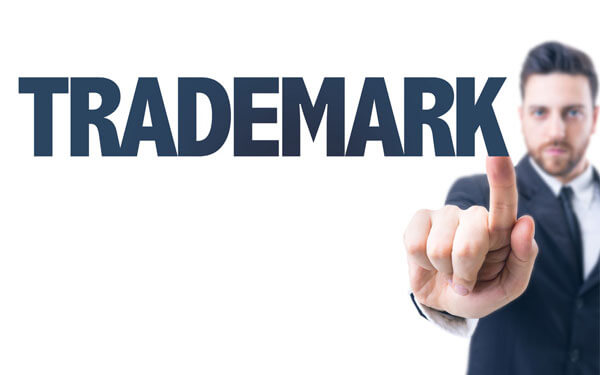This article has been written by Apoorva Jitendra Maurya pursuing a Diploma in International Contract Negotiation, Drafting and Enforcement from LawSikho.
This article has been edited and published by Shashwat Kaushik.
Table of Contents
Introduction
Trademarks help in distinguishing products not only for consumers but also for legal and business mechanisms. Trademarks are used to identify and protect logos, slogans, words, designs, and other elements that signify a relationship with a company or individual. Service marks are used interchangeably with trademarks but service marks identify and distinguish a service from another, and they do not cover the product.
In this fiercely competitive and fast-paced business landscape, exclusivity, uniqueness, recognition, reputation, and consumer trust of the brand play an important role in having that edge over the others in the race. Further, it has become a widespread phenomenon to copy the products of big brands and sell them at a lower rate in tier 2 and tier 3 cities and rural areas. This affects the brand image of the product and can lead to potential losses and damage to the company’s name and reputation. For instance, it is prevalent to see products of branded shoes of Adidas, Nike, and Puma sold in the famous market of Delhi, Sarojini Nagar Market, at a cheaper price. If one observes closely, they are fake products, and the names are clearly “ABIDAS”, “KIKE”, “HUMA”. Such tactics, although they benefit the seller, harm the image and goodwill of the company as it faces a loss in reputation and brand value.
What is a mark
Mark is defined under Section 2(m) of the Trademark Act 1999, and it states that “mark includes a device, brand, heading, label, ticket, name, signature, word, letter, numeral, shape of goods, packaging or combination of colours, or any combination thereof.”
What is a trademark
A trademark is a word or symbol or a combination of both used by entrepreneurs, business owners, manufacturers, companies, etc. in connection with the product or service. A trademark is defined under Section 2(zb) of the Trademark Act of 1999, and it states that “trademark means any mark that is capable of being represented graphically and distinguishing the goods and services of one person from those of others, and the mark may include the shape of goods, their packaging, and a combination of colours.”
What is the objective of a trademark
The object of a trademark is to establish distinctiveness and protect the rights of the person manufacturing and selling goods and services. The object of the trade mark has been explained by the Hon’ble Supreme Court of India in Dau Dayal vs. State of Uttar Pradesh, wherein it was reiterated that the protection of the rights of the manufacturer and seller with unique and distinguishable marks is the main objective of trademarks. Trademark law ensures protection against infringement, passing off, misuse, fraud, and counterfeiting of the marks. Generally, the remedy against such actions lies in the civil courts and high courts of the respective states, but the law also gives the right to approach criminal courts for prosecution of offenders and speedy justice.
- Brand identification: A trademark distinguishes a product or service from similar offerings in the market. It creates a unique identity for the brand, making it easier for consumers to recognise and differentiate it from competitors.
- Legal protection: Registering a trademark provides legal protection to the owner. It grants exclusive rights to use the mark and prevents unauthorised parties from using it without permission. This legal protection helps to safeguard the brand’s reputation and prevents infringement of intellectual property rights.
- Quality assurance: A trademark often signifies a certain level of quality associated with the brand. Consumers tend to associate familiar trademarks with products or services they trust, which can lead to increased customer loyalty and repeat business.
- Marketing advantage: A strong trademark can be a valuable marketing tool. It helps establish brand recognition, making it easier for consumers to find and choose products or services from that particular brand. This can lead to increased sales and market share.
- Competitive advantage: A well-established trademark can provide a competitive advantage in the marketplace. It can discourage competitors from using similar marks, protecting the brand’s unique identity and market position.
- Business valuation: A strong trademark can contribute to the overall value of a business. It is considered an intangible asset and can be a significant factor in determining a company’s worth.
- International recognition: Registering a trademark internationally can protect the brand’s identity and legal rights across multiple countries. This is particularly important for companies operating in global markets.
What is brand identity
Brand identity is a critical aspect of any business, as it serves as the visual and emotional representation of the brand to the world. It encompasses various elements such as colours, logos, designs, typography, and even sounds that collectively contribute to the overall perception and recognition of a brand.
At the core of brand identity lies the desire to create a unique and distinct image that sets a brand apart from its competitors. This is achieved through careful consideration of various factors, including the brand’s purpose, values, and target audience. A well-crafted brand identity should effectively communicate the brand’s personality, evoke emotions, and create a lasting impression on consumers.
One of the key components of brand identity is colour. Colours have the ability to convey powerful messages and emotions. For instance, blue is often associated with trust and reliability, while red might suggest passion and excitement. Choosing the right colours for a brand’s logo, website, and marketing materials is crucial in establishing a consistent and recognisable visual identity.
Another critical element of brand identity is the logo. A logo is a visual representation of a brand that serves as its symbol and is often the first point of contact between a business and its potential customers. An effective logo should be simple, memorable, and versatile enough to be used across different platforms and applications.
Typography plays a significant role in brand identity as well. The choice of fonts and typefaces can greatly influence the overall tone and feel of a brand. Serif fonts, for example, might evoke a sense of tradition and sophistication, while sans-serif fonts might convey a more modern and minimalist aesthetic.
In addition to these visual elements, brand identity also includes auditory components such as sound logos and jingles. These elements can help create a distinctive and recognisable brand experience. For instance, the iconic NBC chimes or the McDonald’s jingle have become synonymous with the respective brands and are instantly recognisable.
Building a strong brand identity takes time, effort, and consistency. It involves creating a cohesive and unified brand experience across all touchpoints, including marketing materials, customer service interactions, and product packaging. A positive brand identity not only helps in attracting and retaining customers but also contributes to brand loyalty and advocacy.
In today’s competitive business landscape, a well-defined brand identity is more important than ever. By investing in and nurturing a strong brand identity, businesses can create a lasting connection with their customers and establish themselves as leaders in their respective industries.
Essentials of a trademark
There are some elements that are essential in a trademark; they are as follows:
- Distinctiveness: A trademark needs to be recognisably different and unique in nature.
- Invention: The trademark should preferably be an invented word.
- Pronunciation: The trademark should be easy to pronounce and remember. For instance, “Zara” for clothes, “Dmart” for low cost grocery and home products, “Swiggy” for food delivery services, etc.
- Deceptively similar: Deceptively similar is defined under Section 2(h) of the Trademark Act 1999 as “A mark shall be deemed to be deceptively similar to another mark if it so nearly resembles that other mark as to be likely to deceive or cause confusion.” The mark should not be deceptively similar, as it leads to confusion in the mind of an average human.
Why is brand identity and protection important
Trademarks are an integral part of brand identity, as they highlight the essence of a brand, including but not limited to its reputation and goodwill. They also serve as a powerful and effective marketing tool to convey the quality, reliability, and authenticity of a product or service.
Consumers find it easy to recognise a well-established brand, which over time fosters customer loyalty and trust. A unique brand can differentiate a company from its rivals and increase consumer preference and recall. Because of their perceived worth and quality, well-known brands frequently fetch greater rates for their goods and services.
Trademarks also prevent confusion among consumers; for instance, we can easily distinguish between an original brand of Bisleri water bottle and a fake one. For a simple and average human, the distinguishing factor would be the correct spelling on the water bottle. This distinguishing factor may vary from product name, product quality, product image, brand name, etc.
However, if intellectual property rights are enforced, a brand can be protected and prevented from being exploited. Here is where the trademark comes and helps in the identification of the original, authentic brand and its protection against unfair use, misrepresentation, or any other kind of infringement.
Registration of trademark
In order to enforce the rights, the trademark needs to be registered with theOffice of the Controller General of Patents, Designs, and Trademarks (CGPDTM). The head office of CGPDTM is in Kolkata, with branch offices in Mumbai, Delhi, and Chennai. The registration process involves the following steps:
- Filing of the application: The applicant needs to file a trademark application under the appropriate class and give all the necessary details and information regarding the “applied mark.”
- Scrutiny: The Registry scrutinises the Applied Mark and generates an examination report.
- Objections: If there are any objections regarding the applied mark, the applicant is duly notified about the same and the examination report is sent to the applicant.
- Reply: The applicant is given an opportunity to defend his mark and file a reply to the objections raised in the examination report within one-month time period from the date of the examination report. The registrar needs to be duly satisfied with respect to the uniqueness and distinctive nature of the applied mark.
- Decision: If the registrar is duly satisfied, he/she accepts the registration.
- Hearing: If he/she is not satisfied with the reply, then the hearing takes place wherein the applicant explains and justifies the distinctive nature of his mark and the final decision to accept or reject the applied mark is made.
Upon registration, trademark holders acquire exclusive rights to use, exploit, transfer, and assign the mark in relation to the goods and services for which it is registered. Additionally, the trademark holders obtain the right to sue and initiate proceedings against infringement, passing off, and unauthorised uses of their trademarks.
Judicial observations
In Eveready Industries India Limited vs. KSC Industries, the plaintiff has been in the business since 1905 and has established a substantial goodwill and brand identity over the years. Plaintiff’s mark “EVEREADY” is associated with its brand and has become an integral part of the company’s identity. The plaintiff alleged that the defendant’s use of the mark is dishonest and aims to exploit the plaintiff’s goodwill, reputation, and brand value. The Hon’ble Delhi High Court conducted a prima facie comparison and found that the “EVEREADY” mark of the plaintiff and “EVERYDAY” of the defendant are deceptively similar and thereby granted an ad-interim ex- parte injunction restraining the defendants from using the mark in any manner.
In Karim Hotels Private Limited vs. Nizamuddin, the Hon’ble Delhi High Court made certain observations wherein Karim’s Hotel Private Limited filed a trademark suit for infringement against Karin’s for using a mark “KARIN’S ” similar to the registered mark of the plaintiff “KARIM’S ”. The Hon’ble Single Bench of Sanjeev Narula, J., granted relief to Karim’s, the plaintiff, and noted that the use of the mark by the defendant was not distinguishable from the mark of the plaintiff, and further, if the defendant’s mark is continued to be used, it will cause grave loss and damage to the business of the plaintiff. Additionally, the Hon’ble Court also noted that it was a deliberate attempt on the part of the defendants to deceive the consumers.
Trademark infringement
Trademark infringement, a pressing issue in the business world, occurs when an unauthorised party employs a trademark that closely resembles or is identical to a registered trademark, leading to consumer confusion and potential dilution of brand value. As a business owner, safeguarding your brand from such infringement is of paramount importance. This section delves deeper into the nuances of trademark infringement and provides essential tips to protect your brand effectively.
Understanding trademark infringement:
- Similarity and Identity: Trademark infringement involves the use of a mark that is similar or identical to a registered trademark. Similarity assessment considers factors such as visual, phonetic, and conceptual similarities, evaluating whether consumers might perceive the marks as originating from the same source.
- Likelihood of confusion: The likelihood of confusion is a crucial factor in determining trademark infringement. Courts assess whether consumers are likely to be misled or confused by the similar trademarks, leading to mistaken purchases or damaged brand reputation.
- Dilution of brand value: Trademark infringement can dilute the distinctiveness and strength of a registered trademark. When consumers encounter similar marks, the association between the trademark and the brand’s unique qualities may be weakened, diminishing its ability to distinguish goods or services in the marketplace.
- Impact on business: Trademark infringement can have significant consequences for businesses. It can result in lost sales, damage to reputation, and legal liability. Additionally, it can hinder business expansion and growth opportunities.
Protecting your brand from trademark infringement:
- Trademark Registration: Registering your trademark with the appropriate intellectual property office provides legal protection and establishes your ownership rights. Registration serves as a public notice, deterring unauthorised use and making it easier to enforce your rights in case of infringement.
- Vigilance and monitoring: Actively monitor the marketplace for potential trademark infringements. Regularly conduct trademark searches to identify similar or identical marks that may pose a threat to your brand. Prompt action can prevent further damage and strengthen your legal position.
- Enforce your rights: If you discover trademark infringement, take prompt action to enforce your rights. This may involve sending cease-and-desist letters, engaging in negotiations, or pursuing legal remedies such as injunctions and damages.
- Educate customers: Educate your customers about your trademark and its significance. By raising awareness, you can help consumers distinguish your products or services from those of infringers, minimising the likelihood of confusion.
- Consider alternative dispute resolution: In some cases, alternative dispute resolution methods such as mediation or arbitration can be effective in resolving trademark disputes without resorting to costly litigation.
By understanding the intricacies of trademark infringement and implementing these protective measures, business owners can safeguard their brands, maintain their competitive edge, and ensure the continued strength and integrity of their trademarks.
Conclusion
As quoted by the famous American historian and educator Daniel J. Boorstein:
“An image is not simply a trademark, a design, a slogan, or an easily remembered picture. It is a studiously crafted personality profile of an individual, institution, corporation, product, or service.”
Every mark denotes and represents an individualistic persona, which needs to be protected and respected. Trademarks play an important role in shaping the brand identity by incorporating the brand’s values, reputation, and consumer trust. Through registration and enforcement, trademarks provide legal protection against infringement, unauthorised use, and ensuring market exclusivity and consumer trust. The effective management and protection of trademarks will be instrumental in fostering customer welfare, goodwill, innovation, and economic growth.
References
- Scc Blog : https://www.scconline.com/blog/post/2024/05/17/karims-v-karins-delhi-high-court-rules-in-favour-of-karims-trademark-in-infringement-suit/
- https://www.scconline.com/blog/post/2024/03/28/delhi-high-court-grants-interim-injunction-against-everyday-gas-lighter-logo-infringing-eveready-logo-legal-news/
- India Code: https://www.indiacode.nic.in/bitstream/123456789/1993/1/A1999-47.pdf
- Vlex : https://vlex.in/vid/appeal-crl-118-of-852312978
- Bisleri : https://blog.karlrock.com/travellers-beware-dont-buy-fake-water-in-india/
- Book: Law relating to Intellectual Property by Dr. B.L. Wadehra
- https://ipindia.gov.in/
 Serato DJ Crack 2025Serato DJ PRO Crack
Serato DJ Crack 2025Serato DJ PRO Crack










 Allow notifications
Allow notifications



